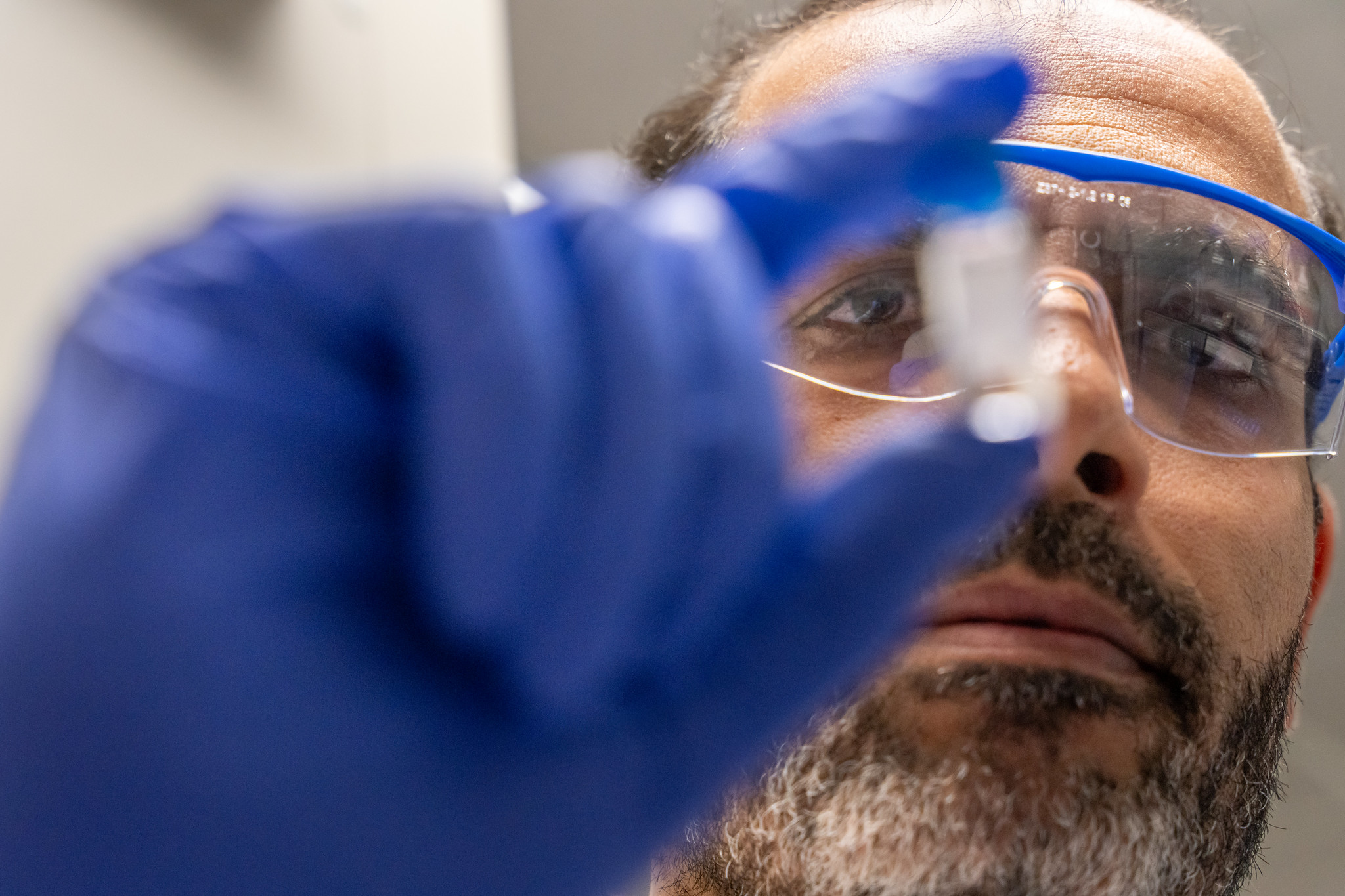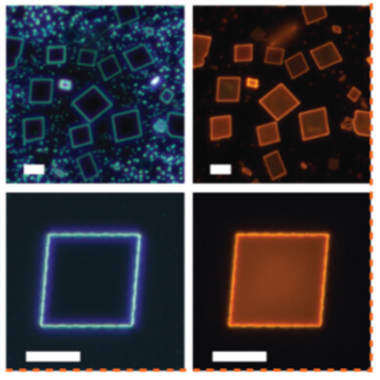Sweet targets: the quest for an improved whooping cough vaccine
With cases on the rise, researchers are aiming to develop a “one-two punch” vaccine strategy against pertussis, more commonly known as whooping cough. This work could ultimately help reduce transmission of the disease and combat the threat of resistant bacteria mutating into stronger, more lethal “superbugs.”
The project aims to improve upon current vaccines by not only neutralizing whooping cough symptoms, as available vaccines do, but also destroying the bacterium behind the illness.
Led by Michigan State’s Xuefei Huang and Ohio State’s Rajendar Deora, the land grant collaboration is supported by the National Institutes of Health.

“If you think of bacteria as criminals, they’re very good at masking themselves from our immune system,” Huang said, an MSU Foundation Professor in the departments of Chemistry and Biomedical Engineering, and the Institute for Quantitative Health Science & Engineering.
“With this project, we want to retrain our immune system to look for new dangers and keep better watch within our bodies.”
An evolving enemy
Whooping cough is one of the leading causes of child illness and mortality in the world, earning its grim name for the gasping attempts at breath that follow uncontrollable coughing fits.
With infection rates reaching a six-decade high, researchers face growing challenges to stay ahead of the microscopic culprit causing the disease itself, a bacterium called Bordetella pertussis.
Current vaccines target a toxin and other proteins that facilitate the sticking of Bordetella pertussis to the human cells. The pertussis toxin leads to respiratory distress, and in childhood vaccines like DTaP, you’ll find a “de-toxified” version of the substance that helps train the immune system for future fights.
Through their latest collaboration, the Spartan and Buckeye scientists are pursuing what Huang calls “complementary medicine” — not a search to outright replace current vaccines, but to strengthen them in the light of new, worrisome developments.
“One problem with the current vaccine is that it treats the symptoms, but not the cause,” Huang explained, who noted that while the vaccine can successfully neutralize the pertussis toxin, the bacterium itself is untouched.
“This means people might become symptom-free carriers, spreading bacteria without knowing it.”
Another concern is how some strains of Bordetella pertussis have evolved to evade our current arsenal of vaccines by shedding a protein called pertactin.

This protein helps the bacteria colonize the respiratory tract and, in whooping cough vaccines, acts as an antigen. Antigens stimulate a response from the immune system, preparing it against future encounters with harmful pathogens.
Researchers worry that the appearance of mutant strains of Bordetella pertussis without pertactin are more likely to thrive and potentially evolve into dreaded “superbugs,” microorganisms resistant to being cleared by the currently available vaccines.
“To control whooping cough, you need ‘whopping’ new ways to think about the problem,” said Rajendar Deora, a professor in the Departments of Microbial Infection and Immunity and Microbiology, at OSU’s Wexner Medical Center.
Sweet targets
To achieve their “one-two-punch” against whooping cough, Huang and Deora will develop an antigen alternative to pertactin and attach it to a cutting-edge delivery system.
For their antigen, the team is leveraging the chemistry of carbohydrates, and a group of complex sugars called glycans. Glycans are found on the surface human cells and cancer cells, as well as viruses and bacteria, making them a tantalizing target for vaccine research.
In 2020, Huang and Deora successfully synthesized several unique sugars found on the surface of Bordetella pertussis, opening the door for the latest vaccine project.
If our immune system knew how to recognize and bind to these sugars directly, it might potentially kill the bacteria, and not just silence the symptoms caused by its toxin.

“These carbohydrates are difficult to isolate from natural sources, so we’ve developed methods to build them with precise control,” said Sherif Ramadan, a research assistant professor at MSU. “That kind of precision is key — it ensures the immune system is being trained to recognize the right molecular patterns.”
Ramadan, an expert in glycan synthesis and conjugate vaccine design, has helped lead the chemical construction of pertussis-specific glycans that closely mimic the native bacterial surface.
“By building these glycans from scratch, we’re able to recreate the pathogen’s signature in a way that’s never been done before,” he said.
To give the immune system a better chance at detecting these glycan-based antigens, the researchers are attaching them to a nanoparticle called Qβ,or Q Beta.
A soccer ball-shaped protein with 180 identical sides, Q Beta is an antigen delivery vehicle representing more than 20 years of research from Huang’s lab.
The huge promise of Q Beta — which has applications in the fight against cancer, antibiotic resistant infections, and even opioid addiction — earned Huang the MSU Innovation Center’s Technology Transfer Achievement Award.
With further support from the Innovation Center and MSU Technologies, Huang also founded Iaso Therapeutics, a company looking to bring this technology out of the lab and onto the frontlines of health science.
The power of Q Beta lies in the fact that our immune system is best at recognizing threats when they present themselves in organized patterns.
With a repeating structure that’s been mapped at atomic-scale resolution, the carrier particle is a perfect canvas to place antigens in attention-grabbing patterns that the immune system can’t ignore.
“Carbohydrates typically provoke weaker immune responses, but when we place them on Q Beta, we’ve shown they can powerfully activate the immune system compared to traditional methods,” Huang said.
“We’re flipping the switch, training our immune system to be on the lookout for new characteristics,” he added.
By combining this glycan antigen and Q Beta duo with the pertussis toxin, the team hopes to develop a potent and multipurpose vaccine system — one that not only alleviates whooping cough symptoms but stops Bordetella pertussis in its tracks.



